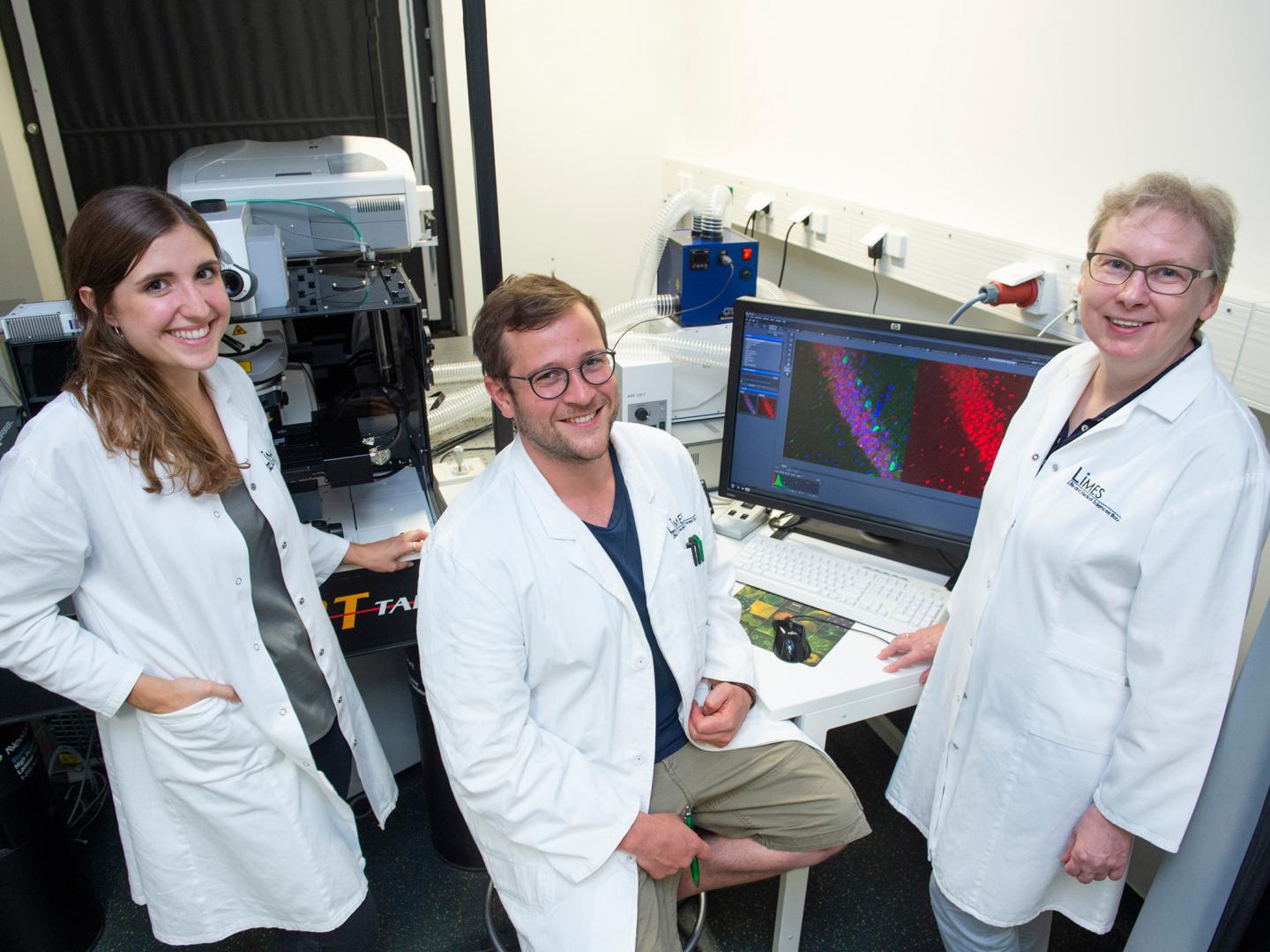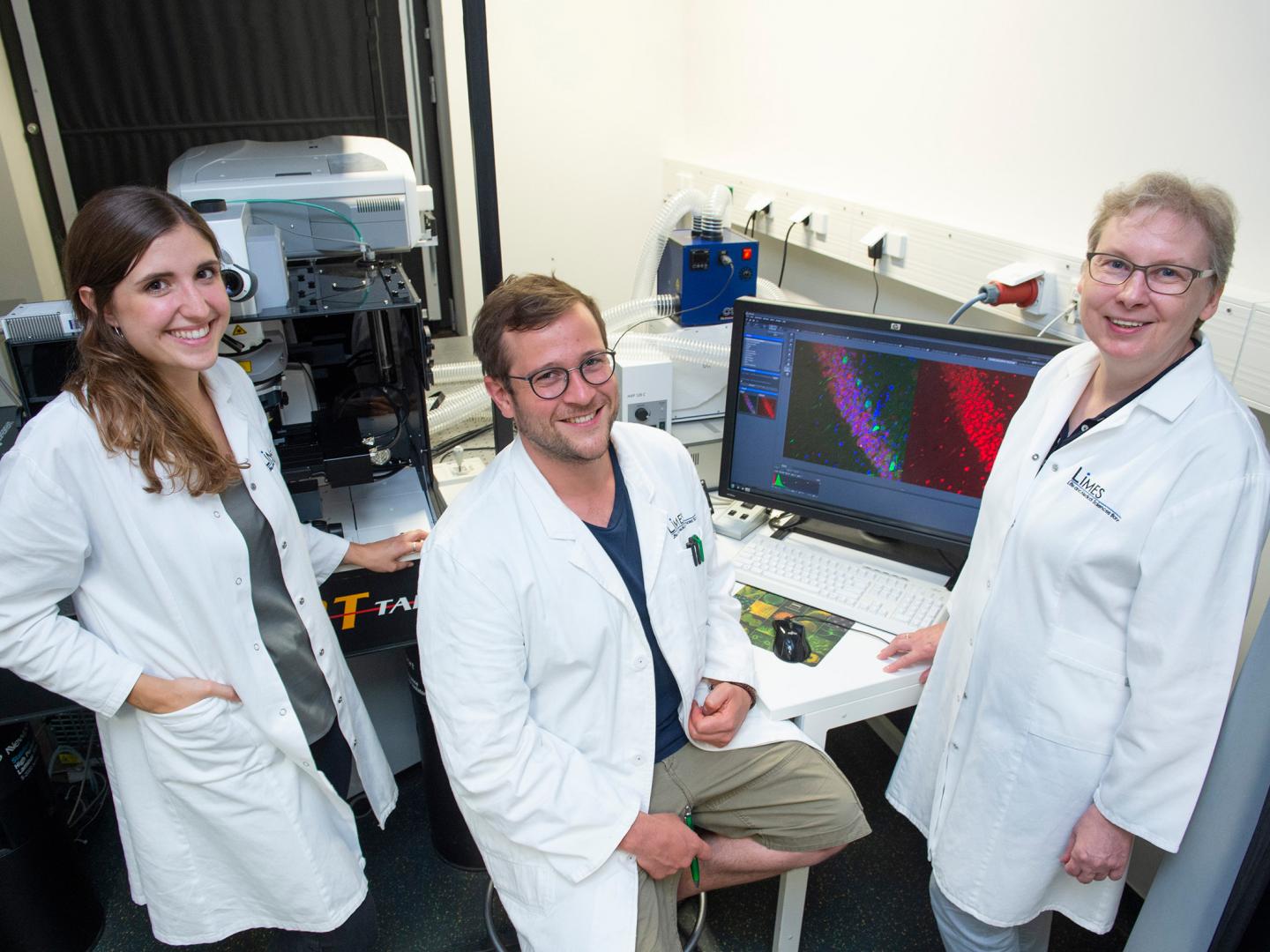
Credit: © Photo: Barbara Frommann/Uni Bonn
The chemotactic protein CCL17 attracts immune cells to where they are currently needed. Doctors have long known: A high level of this substance in the body indicates an allergic reaction. A team of scientists led by the University of Bonn has now discovered a completely new function: CCL17 also influences signal transmission in the brain. There may even be a molecular link to autism. The results have now been published in the journal "Glia".
Chemotactic cytokines, chemokines for short, are signaling proteins that act like an attractant and ensure, for example, that immune cells migrate from the bloodstream into the tissues. The chemokine CCL17 is known to increase inflammation and is associated with allergic diseases. A high level of CCL17 in the blood is regarded by doctors as a diagnostic marker of ongoing allergic reactions such as atopic eczema. The further the research on chemokines progresses, however, the more functions are discovered. Thus, an earlier joint study by the Universities of Münster and Bonn showed that animals with a defect in the expression of the receptor for CCL17 have behavioral problems: For example, they were unable to build proper nests like their normally developed mates.
"These behavioral changes indicated that CCL17 not only affects the immune system but perhaps also the brain," explains the corresponding author of the study, Prof. Dr. Irmgard Förster from the LIMES Institute at the University of Bonn, who is also a member of the Cluster of Excellence "ImmunoSensation". If there is such a connection, which cells in the brain produce CCL17? This question was investigated by doctoral student Lorenz Fülle and Irmgard Förster, together with scientists from the Institute of Cellular Neurosciences around Prof. Dr. Christian Henneberger, Dr. Annett Halle from the German Center for Neurodegenerative Diseases (DZNE) and Dr. Judith Alferink from the University of Münster.
Through a genetic modification, the researchers coupled the release of CCL17 with the production of a fluorescent dye that illuminated all cells that produce the chemokine. The scientists additionally stimulated CCL17 production by simulating an infection using a substance contained in bacterial cell membranes. The production sites of the chemokine in the brain were then clearly visible under the microscope. "CCL17 is mainly produced by neurons of the hippocampus," reports lead author Lorenz Fülle. This structure, which is shaped like a seahorse, is present on the right and left side of the brain, and fulfills an important function in tasks such as orientation and memory formation.
Scientists blocked the gene for CCL17
As a next step, the scientists blocked the gene for CCL17 production and observed the effect. In the absence of the chemokine, the microglial cells in these "knockout" mice were significantly smaller and there were only half as many as in untreated control animals. Microglial cells have long been known as immune cells of the brain, where they take responsibility as "health guards" for the disposal of cell debris and infectious agents. Meanwhile, it has been shown that these "scavenger cells" also directly support the work of the neurons independently of their phagocytic activity.
In order to investigate the effect of CCL17 on the function of neurons, scientists in the laboratory of Prof. Dr. Christian Henneberger at the Institute of Cellular Neurosciences (University of Bonn Medical School) examined neuronal signaling in the brain. Henneberger: "The experiments indicate that CCL17 attenuates signal transmission in the hippocampal region of the brain." Since autism in humans is also associated with elevated levels of CCL17 in the blood, CCL17 could also play a role in this developmental disorder, for example due to an infection or an allergic reaction in early childhood. "But so far these are speculations," says Förster. "The exact effects of CCL17 have yet to be demonstrated by further research."
###
Publication: Lorenz Fülle, Nina Offermann, Jan Niklas Hansen, Björn Breithausen, Anna Belen Erazo, Oliver Schanz, Luca Radau, Fabian Gondorf, Konrad Knöpper, Judith Alferink, Zeinab Abdullah, Harald Neumann, Heike Weighardt, Christian Henneberger, Annett Halle and Irmgard Förster: CCL17 exerts a neuroimmune modulatory function and is expressed in hippocampal neurons, GLIA, DOI: 10.1002/glia.23507
Media contact:
Prof. Dr. Irmgard Förster
LIMES-Institut
Cluster of Excellence ImmunoSensation
University of Bonn
Tel. +49 (0)228/7362780 or 7362789
E-mail: [email protected]
Media Contact
Dr. Irmgard Förster
[email protected]
49-228-736-2780
@unibonn
http://www.uni-bonn.de
Related Journal Article
http://dx.doi.org/10.1002/glia.23507





